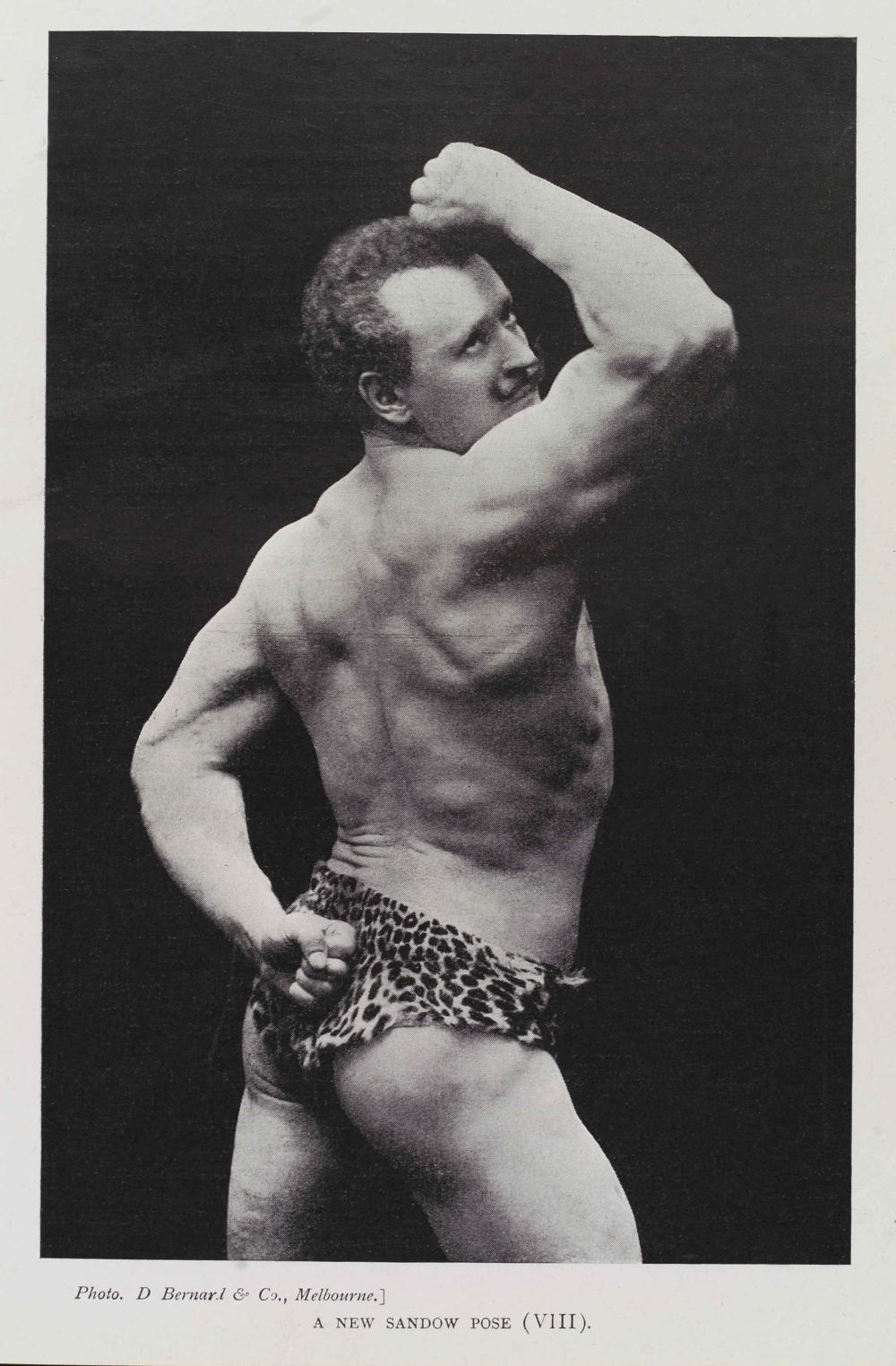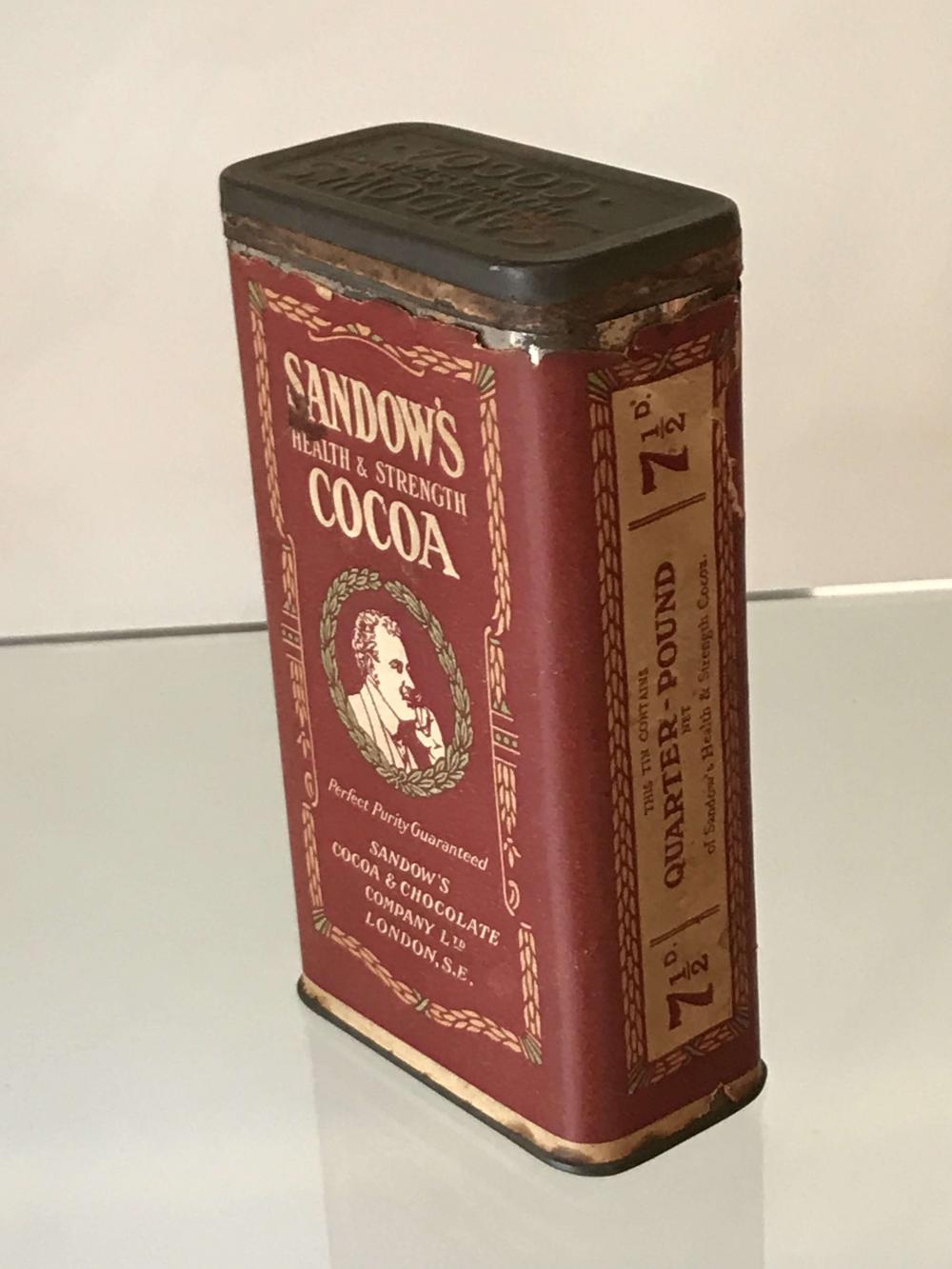Tasting past strength – Darwin College’s Lesley Steinitz describes her doctoral research
“Sandow’s Health and Strength Cocoa” was a much-hyped health food launched in 1911. Its manufacturer, Eugen Sandow, was a celebrity strong-man and ‘Professor of Physical Culture’ to the King, and is now referred to as the father of body-building. His rock-solid muscles and incredible strong-man act showed that he knew quite a lot about health and strength, but his product’s name probably contradicts everything you think you know about cocoa! Well, cocoa contains quite a high proportion of protein, usually around 20%. This was an important consideration because proteins were thought to be lacking in many people’s diets. (The tiny quantity of protein in a cup of cocoa does not appear to have occurred to anyone!) Given that scientists seemed to be saying that only proteins could build and repair muscles, this lack was said to be a cause of bad health and therefore of impending national economic crisis. However, like its manufacturer, Sandow’s cocoa was positioned as the embodiment of muscles and fitness and the antidote to this existential threat of protein insufficiency.

How did people respond to this new cocoa? One of the approaches that historians have increasingly been using to get a handle on such questions has been to use all the senses to investigate visual and material things from the past. Unfortunately for me, processed foods are ephemeral so I have, in my research into various health foods, referred to packaging, the imagery in adverts, and consumers’ reactions manifest in things like fancy dress costumes. These have been useful, but imagine my excitement when I opened an email from Sandow’s great-grandson, Chris Davies, who offered me the chance to examine and taste Sandow’s Cocoa from an unopened tin that was a century old!
What might I learn from this rare find? Could it help me to understand how people might have experienced handling and tasting it? Would it have squared up with Sandow’s adverts? When I gently eased off the lid, wafts of fine aromatic clay-coloured powder went everywhere. The tin was full to the brim! I thought back to Sandow’s claims, that his ‘wind-sifted’ cocoa was four times as fine as other cocoas, and that you got more spoonfuls for your money. Handling it, I noticed how pale and free-flowing it was compared to the darker, more clumpy and coarser cocoas that I am (and they were) used to.

As to its strengthening effects, one tin wasn’t going to be enough for me to attempt to build up Sandow-like muscles. To assess the claims about its nutritive properties, I needed science. Fortunately, the Cambridge college system means that even historians sit next to chemists and biologists at dinner, and I was able to recruit two of them analyse the cocoa. We looked at it under the microscope, and they analysed its nutritional composition and checked for contaminants that might harm us – there appeared to be none. We compared what we found to Sandow’s claims and to modern cocoas. Yes, Sandow’s was lower in hard-to-digest fat and higher in all-important protein than most contemporary and modern cocoas, at 26%. Most cocoas were (and are) not simply an extract from the cocoa bean, though you wouldn’t know it from the ingredients list. They are “Dutched”. This is a nineteenth century technique whereby “alkalis” are added during processing. They make the powder darker, apparently more soluble and reduce the mouth-feel and indigestibility of the extra fat left in the cocoa after processing the cocoa beans. Dutched cocoas tend to have higher fat and correspondingly less protein. Sandow’s was pale, pure, and had no “alkali”. In fact, it was most similar in colour, texture and chemical composition to a modern “raw” health-food cocoa. I realised that my preconception that darker cocoa would be tastier was an assumption shaped by cultural expectations …
The final test, obviously, was flavour. To prepare for this, I prepared and got used to modern raw cocoa made with just water and a little sugar, as per the instructions that came with the Sandow’s tin. The taste test was live, in front of an audience at the Polar Museum as part of Cambridge’s Science Festival. So, was Sandow’s cocoa ‘luscious’? Perhaps not, but despite its age, it had a good flavour though one of my scientists, more familiar with milky cocoas, described its as “cardboard.” Did my experiences influence my trust in Sandow’s ability to make me healthier and stronger? I’ve bought modern health foods based on equally unlikely claims!
As a historical exercise, this has certainly informed my analysis of health food positioning and culture. But most importantly, if you’d like to invite me for a cocoa, I now drink it like my coffee, black.
Lesley Steinitz is writing up her doctoral dissertation, Industrial health foods and culture during Britain's Decadent Era (1880-1920).
